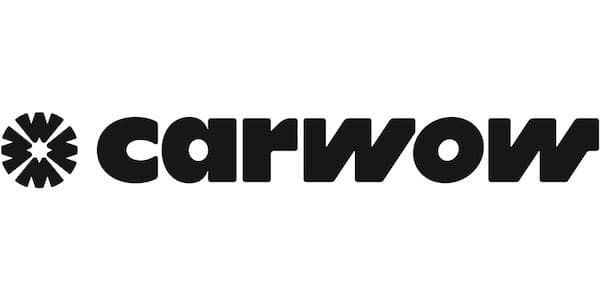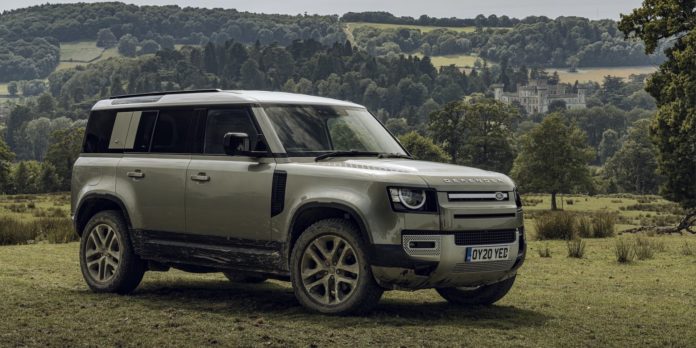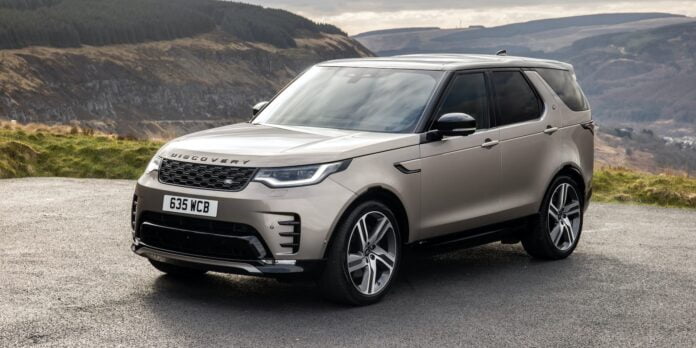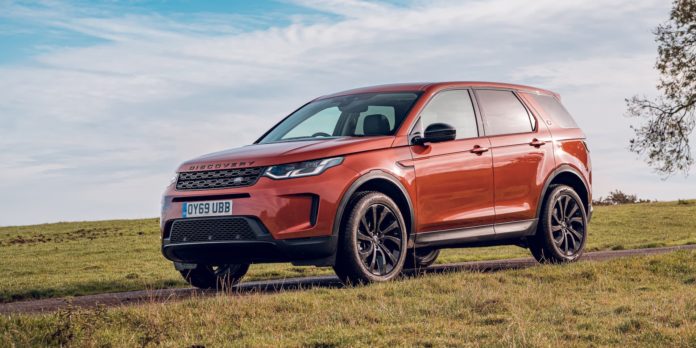Just two car brands have held the ‘golden trio’ of Royal Warrants, supplying vehicles to the late Queen, the Duke of Edinburgh and Prince of Wales – Jaguar and its long-time sister Land Rover. Her Majesty was a huge fan of Land Rover, reputedly in her lifetime owning more than 30 of them.
Yet Land Rover is a name with a fanbase that goes far beyond the Royals and around the globe – from the moment the first basic model was launched in 1948 as a British answer to the WWII-era Jeep, it became the workhorse of choice for anyone with a job to do off-road, from farmers to electricity suppliers to rescue workers.
Later models like the Freelander and Discovery, and an upmarket sister called the Range Rover, extended the appeal of Land Rover beyond the role of utility vehicle, with rural families in particular adopting it as everyday transport.
Despite a diluting of the original brand with the likes of two-wheel drive, and a reputation for terrible reliability and security, Land Rover remains the first choice of many who want an upmarket SUV offering a good drive on the road – but also the ability to go a long way off the road.
So who or what is Land Rover?
Land Rover began life as a single vehicle fro the Rover motor company. After the second world war, many vital materials like steel were still rationed and Rover needed a stop-gap model to keep sales going.
Chief designer, Maurice Wilks, had a farm in Wales where he was making use of surplus US Army Jeeps. He realised he could produce an all-terrain vehicle that was better than a Jeep, made from surplus steel offcuts with light alloy body panels and a Rover engine.
Rover knew its market from the start – among the vital elements of the design were power take-offs, enabling the vehicle to power farm machinery and the like.
Rover launched its ‘Land Rover’ at the 1948 Amsterdam motor show and it was an instant success. By the end of the year, it was Rover’s most popular vehicle and was being exported to 70 countries. Regular improvements followed, a major one in 1956 being the launch of a longer-wheelbase model, followed by the first diesel-engined version a year later.
By 1959, 250,000 Land Rovers had been sold and a new Series II was launched in 1961. It only took seven more years for Land Rover to reach its first half-million sales. By now the catalogue included many different types to suit different industry needs, right up to a small Army truck called the Forward Control – Land Rovers would go on to become a vast part of the British Army’s vehicle roster and they remain so today.
The next milestone for Land Rover came in 1970 with the launch of an all-new upmarket sister model, the Range Rover. This would prove to be equally successful and become a core part of Land Rover’s future. Rover was now part of British Leyland, a merger first with Leyland and then BMC: as BL struggled, eventually falling into state control to avoid bankruptcy, Land Rover success continued, reaching a million vehicles in 1976 – two years later Land Rover Ltd was formed as a separate company within the BL group.
The base Land Rover model had now reached Series III while the Discovery, an all-new sister launched in 1989, widened the appeal beyond the core utility market. A year later, the Series III was updated with a new name – Defender.
By now BL had been privatised and broken up. In 1994, Land Rover gained a new owner, German giant BMW – this lasted just six years but saw in 1997 the arrival of the first Land Rover without a separate chassis. This was called the Freelander and aimed as much at families as farmers – it quickly became the brand’s best-seller and, from 2010, the first mainstream Land Rover to be available with two-wheel drive.
Under Ford’s ownership from 2000, new Range Rover and Discovery models both abandoned the separate chassis but retained their excellent off-road prowess – through the way they were built and increasing electronic technology helping their drivers.


Ford had also owned Jaguar since 1990, and in 2007 it sold both brands to Tata – the Indian giant set up a new British-registered operation and the two became one under Jaguar Land Rover Ltd or JLR. Tata still owns both brands today.
A controversial move was the axing of the Defender in 2016 – the ‘original Land Rover’. In 2019 an all-new Defender appeared but while highly capable, it had no connection to its predecessor and among those most annoyed by the original’s demise was billionaire Sir Jim Ratcliffe – he tried to get a deal to continue making old Defenders and when rebuffed he created his own interpretation, the Ineos Grenadier.
Another controversial aspect of the new Defender, and the current Discovery, is that they are no longer built in the UK, but in Slovakia. Other Land Rovers are still British products, however, made at factories in Solihull and Halewood.
Successive rebrands of both Land Rover and Jaguar in recent years have attracted mixed reactions and the latest strategy is also leaving some observers non-plussed. As well as further pruning dealer numbers that have been on the slide for some time, the remaining outlets are being presented as a ‘House of Brands’ with four ‘families’ – Jaguar, Range Rover, Discovery and Defender – having their own bespoke areas within the showroom. We’ll wait to see how that works out…
What models does Land Rover have and what else is coming?
The current Land Rover range is divided neatly into two – the Land Rovers and their more upmarket (and more expensive) siblings, the Range Rovers.
Core of the Land Rover range is the Defender. It has no connection to its much-admired predecessor, though it remains very capable on and off road. It comes in three wheelbase lengths and the engine choices include a plug-in hybrid.
The Discovery, now in its third or fifth generation depending on who you talk to, is effectively a bigger Defender, though both can be had in seven-seat form. It remains a supreme off-road vehicle but certain aspects spark mixed reactions, especially its awkward rear styling.
The Discovery Sport is, as its name suggests, a slightly less bulky Land Rover, though yet again you can have it with seven seats. When launched in 2015 it replaced the more compact, and long-lasting, Freelander. While again very off-road capable, it more than any other model has epitomised a worsening Land Rover reputation for poor reliability.
The upmarket side of the showroom starts with the Range Rover itself, the fifth-generation model and still the flagship vehicle in the Land Rover range, as it has been since the first Range Rover launched back in 1970. Petrol, diesel and plug-in hybrid versions are available. While upmarket and very highly rated for its luxury, it is every bit as capable off-road as its Land Rover siblings. Again, however, poor reliability has persisted across the generations, and the latest models also suffer from an unwanted reputation for being very easy to steal.
The Range Rover Sport first launched in 2005, effectively as a vehicle for those who wanted a Range Rover but a bit smaller and not so expensive. The latest third generation model includes a couple of plug-in hybrid options with all-electric ranges cresting 70 miles.
In 2011 Range Rover added a third model, the Evoque, which was completely updated in 2019. It’s a medium-sized SUV with petrol, diesel and PHEV drivetrains. Rumours of an electric version are still to come to pass, while Land Rover has never looked like repeating the convertible Evoque that was part of the initial line-up.
The youngest of the current Range Rover roster is the Velar. Launched in 2017 it fills a perceived gap between the Evoque and the Range Rover Sport. Built on the same underpinnings as several models from sister company Jaguar, it is popular for its capabilities but again, has earned poor scores for its reliability.
The Velar’s days in its present form are apparently numbered – in 2025 we expect to see a completely new model, only available in electric form. It won’t be the first electric Land Rover though – a Range Rover Sport EV is expected to be unveiled by the end of 2024 while EV versions of both the Evoque and the flagship Range Rover are believed to be on the way.
Also coming is a ‘baby’ version of the Defender likely dubbed Defender Sport while the Discovery is expected to be completely reinvented as an EV – both Discovery variants have lost sales to the latest Defender.
Meanwhile the Freelander is coming back, but initially at least only in China. A new range of EVs will be marketed under the Freelander brand, but with no Land Rover badges, and if they are a success they could be sold globally.
Current Vauxhall range on our Expert Rating Index
Where can I try a Land Rover car?
Looking to get behind the wheel of a Land Rover? You’ll have further to travel than you used to, and it could get worse in the future. Back in 2016 JLR had 117 Land Rover outlets, but a revamp saw big investments in huge dealerships selling both brands, but the number of them shrinking below 90.
Now the latest ‘Reimagine’ strategy is apparently seeking to reduce that number even further as the brand sets up for a future focusing on electric vehicles – some of the more outlandish rumours suggest the number of outlets could end up at just 18…
What makes Land Rover different to the rest?
For most of the life of Land Rover you could be sure that if you bought one it would be able to go where all its rivals could not. The vehicles were all four-wheel drive, built to take the toughest terrain.
However, reliability has always been a sticky point, especially in markets outside the UK that are understandably less parochial about British vehicles. The Australians, for example have a famous saying: “If you want to go Outback, take a Land Rover. If you want to come back, take a Toyota.”
You can buy two-wheel drive Land Rovers these days, which to some older fans of the marque is considered sacrilegious. But even the 2WD variants will still be a lot more capable on the rough stuff than most of their rivals, while bringing Land Rover ownership to a wide range of drivers.
A Land Rover fact to impress your friends
All early Land Rover models were painted a light ‘Pastel Green’ and the reason is very simple – Rover had managed to get hold of hundreds of litres of military-surplus paint. Later the ‘standard’ colour changed to a deep bronze green for connected reasons – Land Rovers were an immediate hit with the Army and the green was seen as a military colour.

Summary
Land Rover’s reputation for producing the off-roaders that really can go as far off the blacktop as you could ever want has survived a host of challenges, from constant changes of owner to questionable reliability.
Today there are a host of SUVs challenging those wearing Land Rover and Range Rover badges. Many offer similar levels of luxury and technology endowing them with serious off-road ability, and several have a better reputation for reliability – but still those in the market for a ‘proper’ 4×4, especially those living in rural areas, will more than likely look first towards Land Rover.

Buy a Land Rover
If you’re looking to buy a new or used Land Rover, The Car Expert’s partners can help you find the right car.
Find a used Land Rover with Motors. Find out more
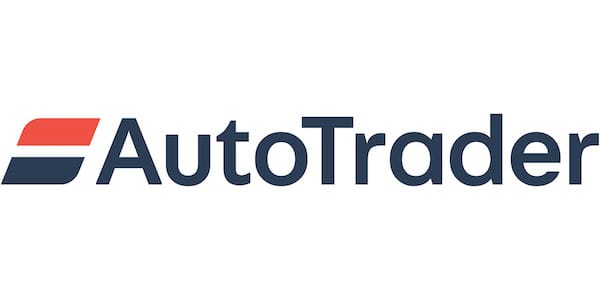
Find a new or used Land Rover with Auto Trader. Find out more
Find a new or used Land Rover with Carwow. Find out more
Lease a Land Rover
If you’re looking to lease a new Land Rover, The Car Expert’s partners can help you find a competitive deal.
Personal contract hire deals from Leasing.com. Find out more
Personal contract hire deals from Carparison Leasing. Find out more
Personal contract hire deals from Rivervale Leasing. Find out more




